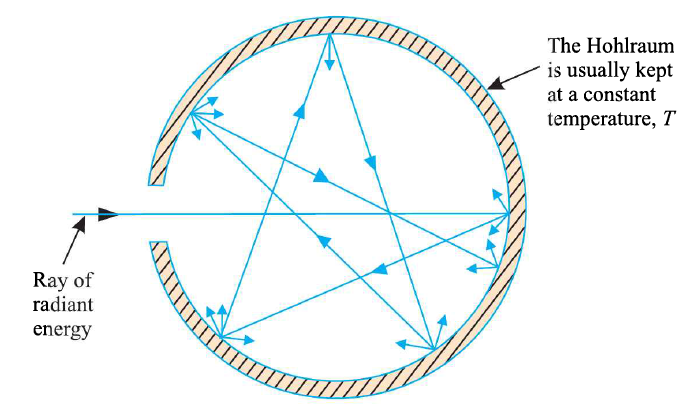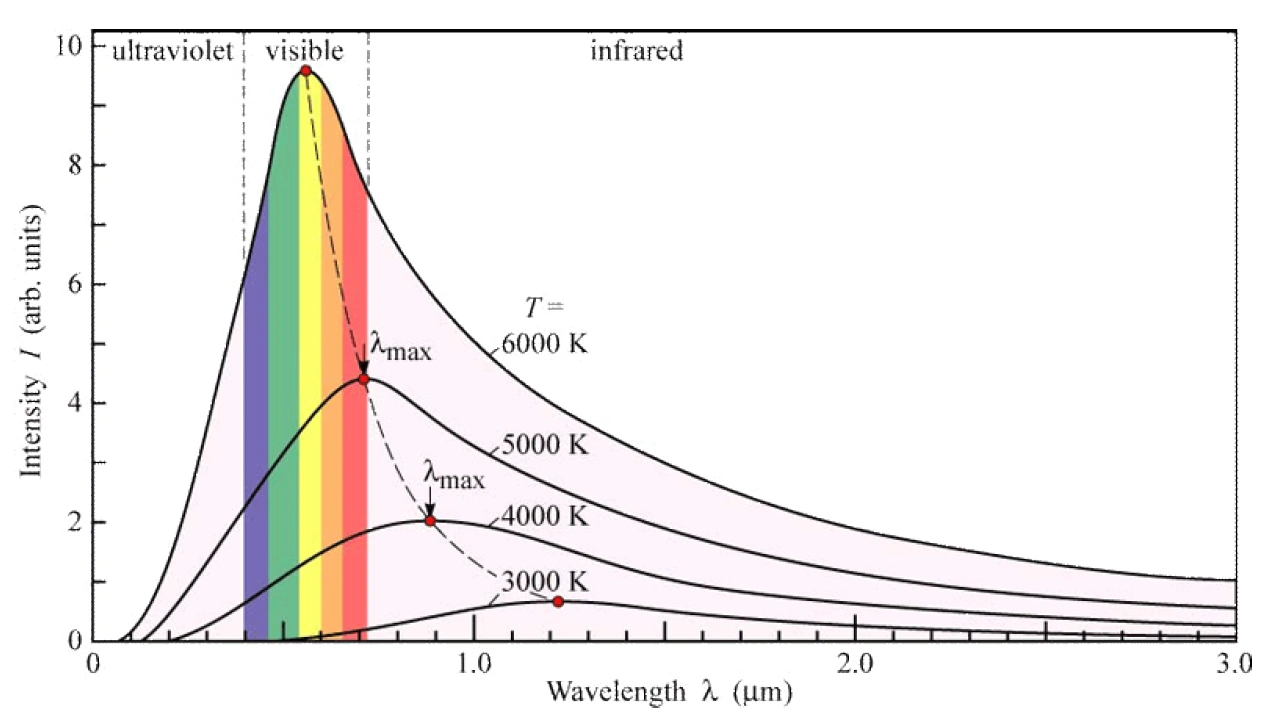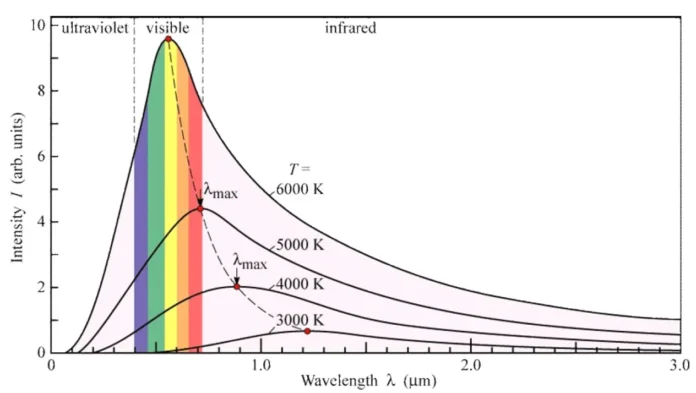The purpose of this article is to understand black body radiation and Wien’s displacement law. You will also find much other important information that you need to know. For a better understanding of Wien’s displacement law, it is important to go through with black body radiation. At the end of this article, we will go through some examples to help us better understand these topics.
If you do not have time to read all of the information, then read the introduction sections first.
Introduction
Black body radiation and Wien’s displacement law are very important topics in radiation heat transfer. Radiation heat transfer can be defined as “The transmission of energy across a system boundary by means of an electromagnetic mechanism which is triggered only by temperature differences. Wilhelm Wien, who derived the Wien’s displacement law in 1893 using a thermodynamic justification, is named for the law. He demonstrated using Doppler’s theory that the energy of light reflecting off the walls varies in the exact same way as the frequency under slow expansion or contraction. A general rule of thermodynamics is that a thermal equilibrium state will remain in thermal equilibrium even after being extended extremely slowly.
Black Body:
A black body is a medium that completely absorbs all radiant energy that comes in contact with its surface (for a black body, a=1, p=0, and t=0 where a = absorptivity, p = reflectivity, and t = transmissivity). The idea of a black body is an idealization that makes it easy to compare the radiation properties of real bodies because no actual body is completely black. The following characteristics apply to a black body:
- No matter the wavelength or direction, it absorbs all incident radiation that strikes it and neither transmits nor reflects it.
- At any given temperature, it emits the greatest amount of heat radiation possible across all wavelengths.
- It is a diffuse emitter, meaning that a black body’s emission is independent of direction.
A hollow enclosure as a black body
Imagines a hollow container with a tiny hole for incident radiation to flow through. Incident radiant energy travels through the tiny opening part of it and is absorbed and some of it is reflected by the interior surface. The majority of this energy is, however, absorbed during the second incident. Once more, only a little portion is reflected. Only a very small portion of the original incident energy is reflected back out of the opening after several of these reflections, leaving a very large quantity unabsorbed. Due to the fact that all radiant energy entering through a small hole leading into a cavity (hohlraum) is absorbed, it behaves very similarly to a black body.

Fig -1
Wien’s displacement law
A relationship between a black body’s temperature and the wavelength at which monochromatic emissive power reaches its maximum value was first discovered by Wien in 1893. There is a specific wavelength at which monochromatic emissive power peaks. According to Wien’s displacement law, the product of the maximum wavelength and the temperature is constant.

Fig- 2
Monochromatic emissive power
The spectral distribution of the energy radiated by a surface must frequently be examined. The amount of radiation released per unit wavelength changes depending on the wavelength at any particular temperature. This is accomplished by using the surface’s monochromatic emissive power, E.
The energy emitted by a black body at a specific wavelength in all directions per unit area per unit of time is known as monochromatic emissive power, and it is measured in units of W/(m2- m).
Real-life examples of Wien’s displacement law
- When the temperature of a conventional incandescent bulb’s filament is changed by a light dimmer, the colors of the bulb emitting light through thermal radiation easily change. The distribution of color shifts towards longer wavelengths and the light appears redder as well as dimmer when the light is dimmed and the filament temperature drops.
- Around 1500 K, a wood fire emits peak radiation at a wavelength of about 2000 nanometers. Only a very small part of its radiation, which is at wavelengths longer than 1000 nm, is at visible wavelengths (390–700 nanometers). Hence, a campfire is a good source of heat but not much light.
- A metal object first gets “red hot” when heated. The longest visible wavelength is at this time. It turns from red to orange and then yellow as it continues to heat up. The metal will appear to be glowing white when it is at its hottest. These are the radiation’s dominant shorter wavelengths.
Recommended Articles:
Biconvex Lens: Definition, Formula, Properties & Applications
Biodegradable And Non Biodegradable Polymers
Advantages & Disadvantages of Biogas Energy
Applications of Biot-Savart Law
Bipolar Junction Transistor: Definition, Construction, Operation, and Types
There are three different modes of heat transfer. Conduction, convection, and radiation. Radiation heat transfer can be defined as "The transmission of energy across a system boundary by means of an electromagnetic mechanism which is triggered only by temperature differences. Wien’s displacement law expresses the relationship between a black body's temperature and the wavelength at which monochromatic emissive power reaches its maximum value. There is a specific wavelength at which monochromatic emissive power peaks. Which is important in radiation heat transfer. A black body is a hypothetical body that has the value of absorptivity as 1. This means it absorbed all the incident radiation. It does not radiate and transmits thermal radiation. The emissivity is equal to the absorptivity for an arbitrary body producing and absorbing heat radiation in thermodynamic equilibrium. A white body is the type of body that reflects all the emitted thermal radiation upon it. Black Body Radiation FAQs
What are the different modes of heat transfer?
What is radiation heat transfer?
How Wien’s displacement law is important in radiation heat transfer?
Explain the black body.
What is Kirchhoff’s law of thermal radiation?
What is a white body?
